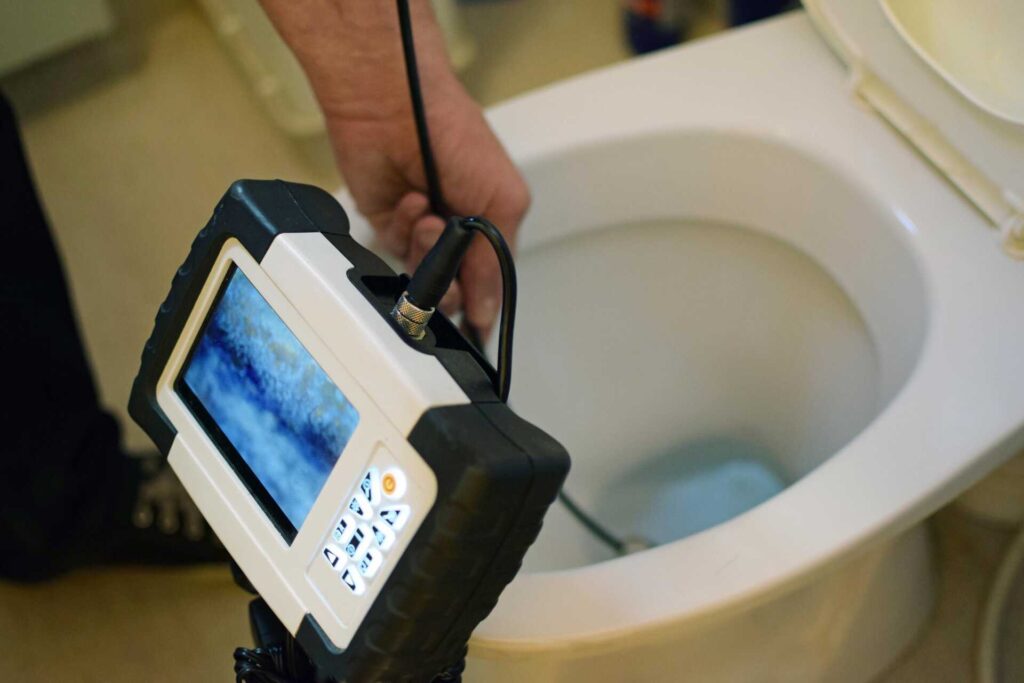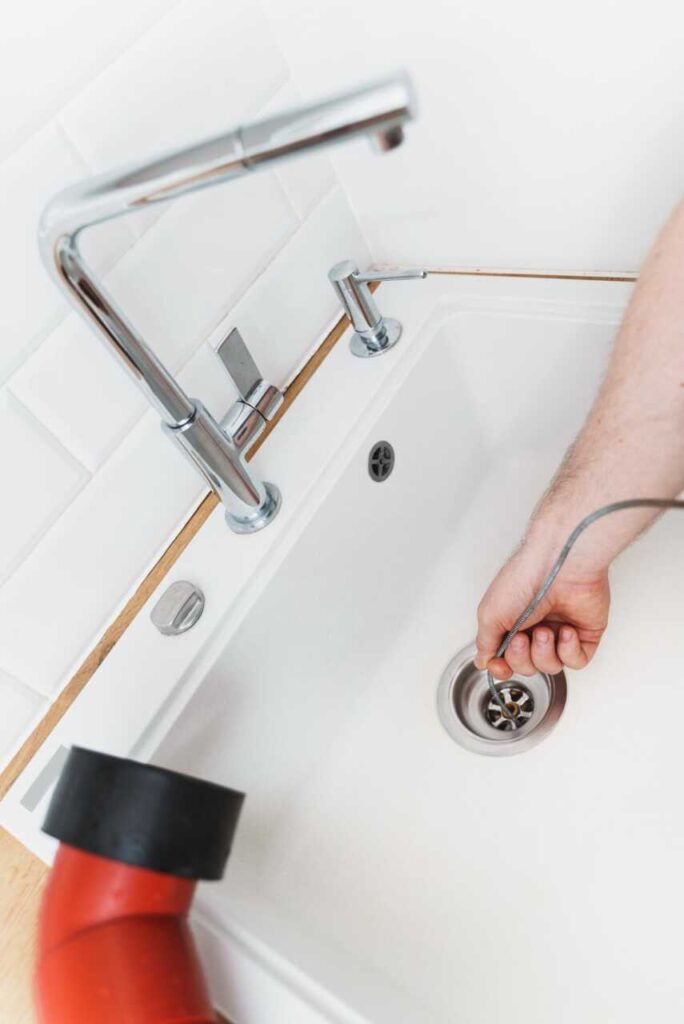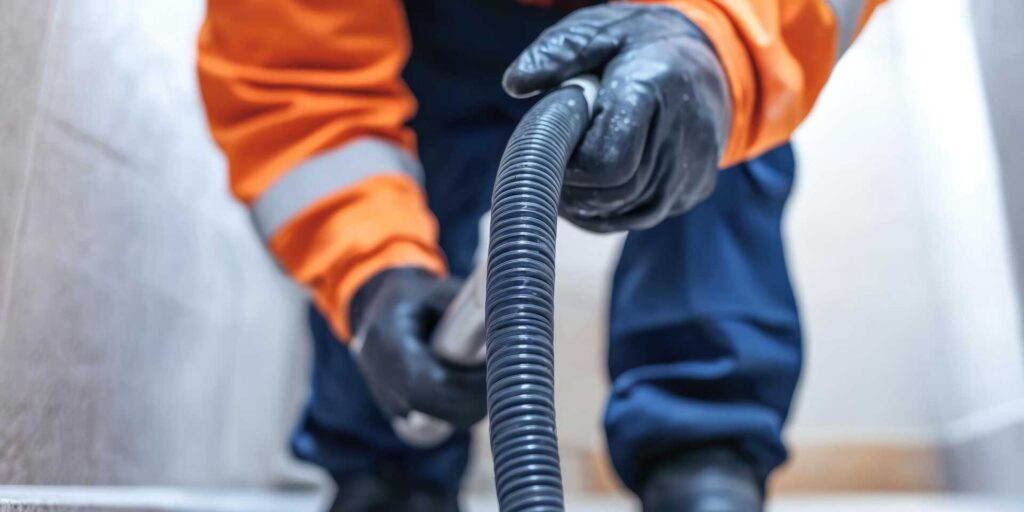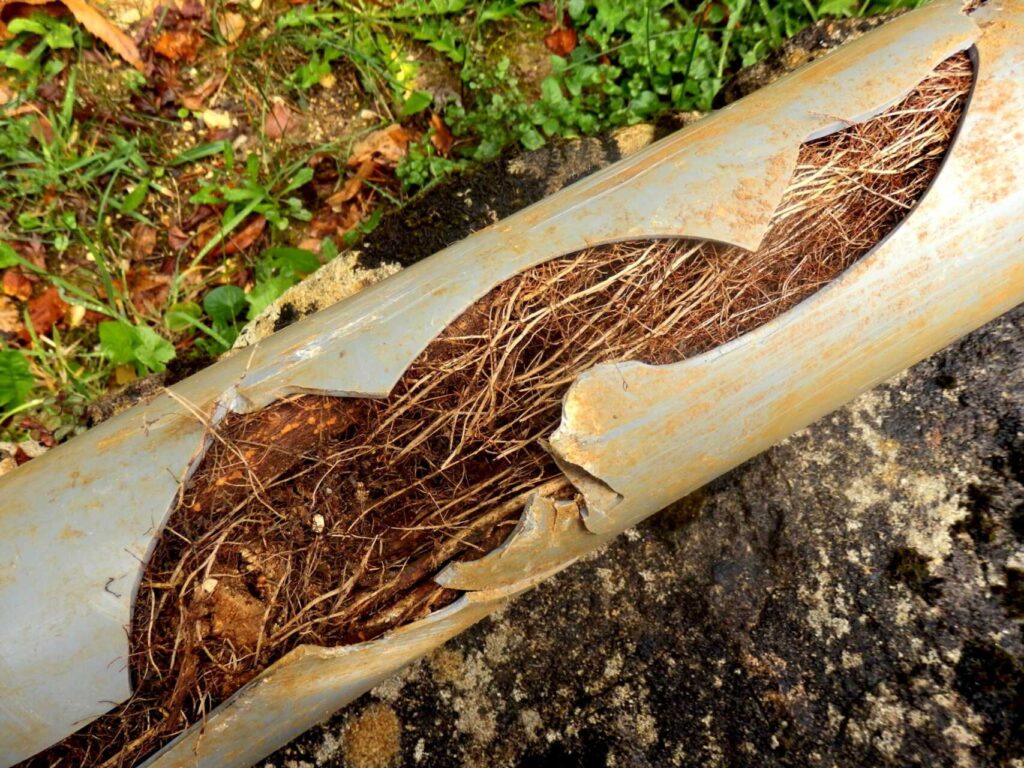
Contents
Is it really true that severe pipe blockages can be resolved without invasive methods? You might be surprised to discover that there are several effective solutions available that don’t require tearing apart your plumbing. From high-pressure hydro jetting to advanced video inspection techniques, these options tackle existing issues and help prevent future problems. Understanding the best approaches can save you time and money, so let’s explore what really works in managing severe blockages and keeping your plumbing system running smoothly.
Key Takeaways
- Hydro Jetting: Utilize high-pressure water jetting to effectively dislodge stubborn debris and grease without damaging pipes.
- Professional Drain Snaking: Employ a flexible auger to navigate and remove deep clogs, efficiently breaking apart or retrieving debris.
- Video Inspection Technology: Use real-time video diagnostics to accurately identify blockages and assess the condition of pipes for targeted solutions.
- Baking Soda and Vinegar: For natural blockage removal, combine baking soda and vinegar to dislodge clogs effectively and safely.
- Regular Inspections: Schedule routine inspections to catch potential issues early, preventing severe blockages and costly repairs.
Understanding Pipe Blockages
When you encounter a pipe blockage, it’s vital to understand the underlying causes to effectively address the issue. Familiarizing yourself with pipe anatomy can provide valuable insights into how water flow works within your plumbing system. Pipes are typically composed of various materials, each with distinct characteristics that influence their performance and susceptibility to blockages.
The diameter and length of the pipes play a significant role in how efficiently water flows. Narrow pipes can restrict water movement, increasing the risk of clogs. In addition, bends and angles in the piping can create turbulence, hindering smooth water flow. Recognizing these factors helps you appreciate why blockages may occur, allowing you to take proactive steps in maintaining your system.
Moreover, understanding the role of gravity in water flow is vital. Water naturally flows downwards, and any obstruction can disrupt this process, leading to pooling and potential backups. You’ll want to keep in mind that certain areas of your plumbing, such as traps and bends, are more prone to collecting debris and causing blockages.
Common Causes of Severe Blockages
Blockages can occur due to several factors, each contributing to the severity of the issue. Understanding these causes helps you prevent future problems and maintain a healthy plumbing system. Here are some common culprits:
| Cause | Description | Prevention Tips |
|---|---|---|
| Grease Buildup | Accumulation of fats and oils from cooking can harden in pipes, creating a thick barrier. | Avoid pouring grease down drains; use strainers. |
| Tree Roots | Roots can penetrate underground pipes, causing significant blockages and damage over time. | Regularly inspect your yard and use root barriers. |
| Foreign Objects | Items like wipes, hair, and toys can get lodged, obstructing water flow. | Always dispose of items properly; educate family members. |
| Mineral Deposits | Hard water can lead to mineral buildup, narrowing pipes and slowing drainage. | Consider a water softener and regular pipe cleaning. |
| Pipe Damage | Cracks or misalignments in pipes can trap debris, leading to blockages. | Schedule routine inspections to catch issues early. |
Basic DIY Drain Cleaning Methods
When tackling minor drain blockages, you can effectively utilize several basic DIY methods. Start with the boiling water technique to dissolve grease, then follow up with a baking soda and vinegar mixture to tackle stubborn debris. Finally, mastering plunger usage can provide the necessary force to clear clogs without the need for harsh chemicals.
Boiling Water Technique
One effective method for clearing minor pipe blockages involves using boiling water, a simple yet powerful solution often overlooked in DIY drain cleaning. The heat application from boiling water can effectively dissolve grease, soap scum, and other debris that accumulate in your pipes. Begin by boiling a kettle or pot of water. Once it reaches a rolling boil, carefully pour it down the affected drain in stages, allowing it to work its magic for about 10 seconds between each pour.
This technique is particularly useful for kitchen sinks, where grease build-up is common. The high temperature of the boiling water melts the grease, turning it into a liquid that can flow through your pipes. However, remember to avoid this method with PVC pipes, as they may warp under extreme heat.
If you find the blockage persists, don’t hesitate to repeat the process. Consistent heat application can gradually break down stubborn clogs. Additionally, combining this method with regular maintenance can prevent future blockages, keeping your plumbing system functioning smoothly. With just boiling water and a bit of patience, you can tackle minor clogs effectively.
Baking Soda Mixture
After trying the boiling water technique, you might want to contemplate another effective method for clearing minor clogs: a baking soda mixture. This simple yet powerful solution utilizes the natural cleaning properties of baking soda and the acidic strength of vinegar. Begin by pouring about half a cup of baking soda directly into the clogged drain. Follow this with an equal amount of vinegar. The ensuing vinegar reaction creates fizzing and bubbling, which helps to dislodge debris stuck in the pipes.
Wait for approximately 15 to 30 minutes to allow the mixture to work on the blockage. During this time, the baking soda acts as a natural cleaner, while the vinegar helps to deodorize your drain. After waiting, flush the drain with hot water to wash away the loosened grime.
This method clears clogs effectively and leaves your pipes smelling fresh, making it a great drain deodorizer. Utilizing this baking soda mixture can save you time and money, fostering a sense of accomplishment as you tackle household issues with simple, eco-friendly solutions.
Plunger Usage Tips
A plunger is an indispensable tool for tackling stubborn clogs in your drains, and using it correctly can make all the difference. First, it’s vital to choose the right plunger type. For toilets, use a flange plunger, which has an extended rubber lip designed to create a better seal. For sinks and tubs, a cup plunger works best.
Once you’ve selected the appropriate plunger, apply proper plunger techniques. Start by filling the basin with enough water to cover the plunger cup. This ensures a tight seal and maximizes pressure. Position the plunger over the drain and push down firmly, creating a seal. Then, with quick, forceful thrusts, pull up and down. This motion creates suction that can dislodge the blockage.
After about 15-20 seconds of vigorous plunging, remove the plunger and check if the water drains properly. If the clog persists, repeat the process. Remember, patience is key. Mastering these techniques empowers you to resolve minor plumbing issues and fosters a sense of belonging within your DIY community. You’ve got this!
Professional Drain Cleaning Services
When you’re facing persistent pipe blockages, professional drain cleaning services offer advanced equipment and techniques that surpass standard DIY methods. Their expertise in diagnosis allows them to identify the root cause of the issue quickly and accurately. By utilizing specialized tools, they can effectively clear clogs and restore your system’s functionality.
Advanced Equipment Techniques
Advanced equipment techniques play an essential role in professional drain cleaning services, markedly enhancing the effectiveness of pipe blockage solutions. By utilizing high-pressure water jetting, you can effectively dislodge stubborn debris and grease buildup that traditional methods often fail to address. This technique employs powerful jets that can reach deep into pipes, ensuring a thorough cleaning without causing damage.
Additionally, robotic inspection technology allows for precise diagnostics of your drainage system. With this advanced equipment, technicians can navigate through pipes, providing real-time video footage that reveals the exact location and nature of blockages. This saves time and ensures that the right approach is taken for each unique situation.
Expertise in Diagnosis
Effective diagnosis is essential for resolving pipe blockages, as it allows professionals to pinpoint the root cause before applying solutions. When you engage a drain cleaning service, expect them to utilize advanced diagnostic tools, such as video inspection cameras and acoustic devices. These technologies provide real-time insights into your plumbing system, helping experts identify issues like root intrusion, grease buildup, or structural damage.
The role of expert assessments can’t be overstated. Trained technicians analyze the data collected from diagnostic tools, determining the most effective course of action tailored to your specific situation. This expertise ensures that they’re not just treating symptoms but addressing the actual problem, which can save you time and money in the long run.
Moreover, you can rest assured that these professionals are equipped with the knowledge to differentiate between minor blockages and severe issues that may require more intensive intervention. By fostering a partnership with skilled drain cleaning services, you gain a sense of security, knowing your plumbing system is in capable hands. Choose expertise in diagnosis for lasting solutions to your pipe blockage troubles.
Hydro Jetting Techniques
Hydro jetting techniques offer one of the most powerful solutions for clearing stubborn pipe blockages. By utilizing high hydro pressure, this method effectively dislodges debris and buildup within your plumbing system. You’ll want to understand how this process works to appreciate its efficiency. Hydro jetting involves inserting a specialized hose into the pipe, which is equipped with various nozzle types that can be tailored to your specific blockage.
Different nozzle types, such as rotating or flat jet nozzles, serve distinct purposes. Rotating nozzles create a powerful 360-degree spray, which is ideal for breaking apart tough clogs like tree roots or grease. Flat jet nozzles, on the other hand, are perfect for flushing debris away along the pipe walls, ensuring a thorough cleaning. This versatility means you can address multiple types of blockages without needing different tools.
You’ll also find that hydro jetting is eco-friendly, as it doesn’t require harsh chemicals. Instead, it relies solely on the power of water, making it safe for both your plumbing and the environment. In addition, this technique can help prevent future blockages by thoroughly cleaning the pipe’s interior, allowing for better flow and reduced risk of buildup.
Implementing hydro jetting techniques resolves current issues and promotes long-term pipe health. If you’re facing persistent clogs or slow drains, consider hydro jetting as a robust solution that can restore your plumbing system’s efficiency.
Snaking the Drain
A common method for addressing pipe blockages is snaking the drain, which involves using a flexible, auger-like tool to navigate through your plumbing system. This tool, often referred to as a drain snake or cable auger, is designed to break apart or retrieve clogs that are otherwise inaccessible. When you encounter a stubborn blockage, grabbing a drain snake can be an effective first step before considering more intensive methods.
To use the drain snake, you’ll start by inserting the end of the cable auger into the drain opening. As you rotate the handle, the flexible cable extends into the pipe, allowing it to reach deeper clogs. The auger’s coiled end can latch onto debris, such as hair, grease, or foreign objects, breaking it apart or pulling it out. This process clears the blockage and helps maintain the overall health of your plumbing system.
It’s crucial to choose the right size and type of drain snake for your specific needs. For sinks and toilets, a smaller, hand-cranked snake may suffice, while larger blockages in main sewer lines may require a powered cable auger. As you handle the snake, make sure you follow safety precautions, like wearing gloves and goggles, to protect yourself from any hazardous materials that may be released.
Chemical Drain Cleaners
Chemical drain cleaners offer a powerful solution for tackling stubborn clogs in your plumbing system. These products work by using harsh chemicals to break down blockages, allowing water to flow freely again. However, it’s vital to approach their use with care, given the potential environmental impact and chemical safety concerns.
Before you decide to use a chemical drain cleaner, consider the following points:
- Effectiveness: Many drain cleaners can dissolve hair, grease, and soap scum efficiently.
- Speed: These products often work quickly, providing near-instant results.
- Accessibility: You can find chemical cleaners at most local stores or online.
- Safety Precautions: Always wear gloves and goggles to protect yourself from splashes.
- Environmental Consideration: Some cleaners contain toxic substances that can harm aquatic life if they enter waterways.
While chemical drain cleaners can be effective, it’s important to weigh their benefits against their potential risks. Look for environmentally friendly options that minimize hazardous effects on our planet. Additionally, verify you know proper handling techniques to protect yourself and your plumbing system.
Video Inspection Technology
When dealing with pipe blockages, utilizing video inspection technology can markedly enhance your ability to diagnose the issue accurately. This innovative approach allows you to see the inside of your pipes in real time, providing a clear visual representation of the blockage’s nature and location. By employing a small, flexible camera attached to a long cable, you can navigate through the pipes without invasive procedures.
One of the primary technology benefits is that it saves time and reduces guesswork. With traditional methods, you might rely on trial and error, which can lead to increased costs and prolonged inconvenience. Video inspection streamlines this process, enabling you to pinpoint the problem effectively, whether it’s a buildup of grease, tree roots, or damaged pipes.
Moreover, the detailed imagery obtained during a pipe inspection allows for thorough documentation. This can be invaluable for future reference or when working with contractors. You’ll have a visual record that can aid in planning necessary repairs or upgrades, ensuring you make informed decisions about your plumbing system.
Additionally, video inspection technology can help in evaluating the overall health of your plumbing. By identifying potential issues before they escalate into major blockages, you can take proactive steps to maintain your system’s integrity. Embracing this advanced technology equips you with the tools needed for effective problem-solving and fosters a sense of community among homeowners who prioritize smart maintenance strategies.
Preventative Maintenance Tips
To keep your plumbing system running smoothly and prevent future blockages, regular maintenance is vital. Neglecting your pipes can lead to severe issues down the line, so adopting a proactive approach is essential. Here are some preventative maintenance tips you can implement to ensure your plumbing stays in top shape:
- Routine Inspections: Periodically check for signs of leaks, corrosion, or any unusual water flow. Catching these issues early can save you time and money.
- Pipe Insulation: Insulating your pipes helps prevent freezing during colder months, greatly reducing the risk of cracks and blockages.
- Mind What You Flush: Only flush toilet paper and human waste. Avoid flushing items like wipes, cotton balls, or even hair, which can accumulate and cause blockages.
- Regular Cleaning: Use enzyme-based drain cleaners or a simple mixture of baking soda and vinegar monthly to break down buildup and maintain flow.
- Professional Service: Schedule annual plumbing inspections with a licensed professional. They can perform thorough checks and identify potential problems before they escalate.
Wrap-Up
In addressing severe pipe blockages, it’s essential to tackle the issue head-on before it spirals out of control. By understanding your options, from hydro jetting to professional drain cleaning, you can keep your plumbing system functioning smoothly. Remember, an ounce of prevention is worth a pound of cure—regular maintenance and early detection can save you from costly repairs down the line. Stay proactive, and your pipes will thank you with years of reliable service.



